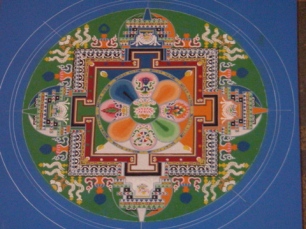Book: Where is Your Buddha Nature? Stories To Instruct & Inspire
By Venerable Master Hsing Yin
Reviewed by Brian Schell
Publisher: Buddha’s Light Publishing, 156 Pages, ISBN 978-1-932293-30-2
Buy from Amazon: http://www.amazon.com/dp/1932293302/?tag=askdrarca-20
This short paperback is a collection of dozens of very short stories which, as the title suggests, instruct and inspire. Master Hsing Yin was the Abbot at Fo Guang Shan, the largest Buddhist monastery in Taiwan, but was also involved with many other organizations. Over his long career, he has met many people and picked up many interesting experiences and stories along the way, some of which he recounts here. This is not a biography, but you can definitely get a sense of what this Master believes just by the way he tells the stories. He teaches humanistic Buddhism: that we should practice Buddhism in our daily lives, living our lives the Buddhist way.
The stories are broken up into eight chapters;
- Stories About Buddha
- Stories About Chan Masters
- Stories About People
- Stories About Devotees
- Stories About Myself
- Stories About Disciples
- Stories About Animals
- Stories About Monastics
- There is also a brief glossary of useful terms at the end.
His writing style is clear and simple, and many of the stories are simple heartwarming tales of compassion and loyalty.
Here’s one of the stories from the book. It’s not one of the more touching ones, but it resounded with me since I could have written the same story myself. Yes, the exact same thing happened to me last September!
Kindness (pg. 97-98)
Several years ago, a group of us traveled to Japan. We got off a train in Tokyo and went outside to look for the bus we needed to take. We climbed on what we thought was the right bus, but after speaking with the driver, we learned that it was not.
The driver said, This bus won’t take you where you need to go. You need to go around the corner over there and down the street to find the bus you want.
This was our first trip to Japan, no none of us knew where the driver was telling us to go. We felt quite lost, but there was nothing else to do but get off the bus and try to fend for ourselves. We thanked the driver and went outside. Our confusion must have shown in our faces, because in a moment, the driver turned to the people already sitting in the bus and said, I’m very sorry, but I have to show these people where to catch their bus. Please wait a moment for me. I’ll be right back.
Then he turned off the engine of the bus, pulled out the keys, and jumped down to the street. He guided us along a confusing route for about five minutes until we arrived at the correct stop.
A few years later, I went to Japan again to teach the Dharma. After one of my talks, a young man came up to me to say hello. He was quite excited as he said, You couldn’t possibly remember me, but I remember you. Can you recall a time a few years ago when you were in Tokyo and a bus driver shut off his engine to walk you to your stop? I was one of the passengers on that bus.
Oh! I said. I’m sorry we made all of you wait for so long!
Oh, no! the young man said. Don’t say that! This is a deeply Buddhist country and we all understand the importance of helping others.
Can you guess what happened when the driver came back to the bus? he continued. As soon as he came back in the door, everyone on the bus started clapping their hands in approval.
For the most part, the stories are about this length, and there is nothing complex here at all. These are simple, real-world, stories that Master Hsing Yin has lived or experienced himself. If you want to be inspired, or just want to read about the compassion and kindness of others, pick this one up.



